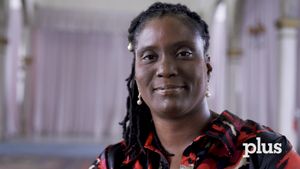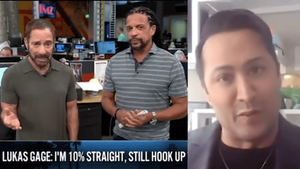This past April while my husband and I were working on his income tax returns-- admittedly in the final days before the deadline-we discovered that the New York State electronic tax form included an item, ominously called "Special Condition Code M3," to signify that we are in a same-sex marriage. We gladly answered yes to the M3 question only to find out later that our response meant we would not be able to e-file his New York State tax return, because his federal and state filing statuses didn't match. Grudgingly, we printed out the state tax form, manually checked his filing status, and mailed it in. (By the way, the state refund check still hasn't come.)
We sucked up the inconvenience and indignity of this requirement comforted by the knowledge that it might well have been the last time we had to do it. When the Supreme Court strikes down Section 3 of the Defense of Marriage Act later this year, we predicted, M3 will go away because our marriage won't be considered a "special condition" anymore. Just like heterosexual couples, our federal and state filing statuses will be the same. Federal tax laws, as well as those related to Social Security entitlements and other spousal benefits, will now apply to us just as they do our opposite-sex counterparts.
Yet as I thought more about DOMA as it relates to things like Special Condition Code M3, I realized that income tax filers in most other states don't even have an M3 code or its equivalent on their returns - and the recent DOMA ruling doesn't in itself do anything to change that. In fact, it widens the gap between us, the couples in the states that have same-sex marriage laws and the ones that don't. Where once we had only state marriage laws that treated us differently, we now have federal ones, too.
What makes this inequity even more troubling is the relationship between state income levels and same-sex relationship recognition. Following is a list in rank order of the 15 wealthiest states in the United States by median household income, according to the U.S. Census Bureau:
1. Maryland
2. New Hampshire
3. Connecticut
4. New Jersey
5. Massachusetts
6. Virginia
7. Alaska
8. Colorado
9. Hawaii
10. Washington
11. Utah
12. Minnesota
13. California
14. Delaware
15. Vermont
Now, here is a list of the bottom 15 states by median household income:
50. Mississippi
49. Arkansas
48. Tennessee
47. Montana
46. South Carolina
45. Alabama
44. Kentucky
43. West Virginia
42. Louisiana
41. New Mexico
40. North Carolina
39. Georgia
38. Florida
37. Indiana
36. Ohio
Notice a pattern? Besides the fact that most of the 15 wealthiest states are in the Northeast or the West, same-sex marriage is or will soon be legal in nine of them (Maryland, New Hampshire, Connecticut, Massachusetts, Washington, Minnesota, Delaware, Vermont, and now California). What's more, three additional states on this list (New Jersey, Colorado, and Hawaii) have civil union laws that at least recognize same-sex couples on some level. Only three states in the top 15 - Virginia, Alaska, and Utah-- have no recognition of same-sex couples, not surprising given the politics of all three.
Among the 15 states with the lowest median household income, most of which are in the socially conservative South, none allow same-sex marriage or civil unions. In fact, Maine, which has marriage equality, is the only state in the bottom half by median household income to have any laws recognizing same-sex relationships. This means that same-sex couples in the lowest-income states are now even more disenfranchised relative to the rest of us than they were before. The only same-sex relationships that will be federally recognized post-DOMA are those already protected at the state level. For those without state marriage laws, at least for now, nothing changes.
Of course, median household income at the state level is an imprecise way to measure individual or family wealth. There are large numbers of low-income people living in states such as Maryland and California, just as there are many wealthy people living in Florida, New Mexico, and other states in the bottom 15. But it is undeniably true that a same-sex couple living in a wealthier state is much more likely to be able to get married - and now to have that marriage recognized at both the state and federal levels - than one living in a lower-income state. That seems blatantly un-American.
DOMA has long been a nightmare that needed to end, and the Supreme Court decision to wake America up to its injustice was the right thing to do. But as we celebrate the recent court ruling and the progress it signals, it's important to remember how far we still have to go and to use the current momentum for all it's worth. Until our laws ensure that a same-sex couple's right to marry is not determined by their geography or their income - or their wherewithal to move to a state where their relationship would be legally recognized -- we are a long way from full marriage equality in the United States.
MICHAEL SADOWSKI is the author of In a Queer Voice: Journeys of Resilience from Adolescence to Adulthood, published earlier this year by Temple University Press. He is a faculty member at Bard College in New York City and Annandale-on-Hudson, NY. Follow him at @sadowskimi


































































Charlie Kirk DID say stoning gay people was the 'perfect law' — and these other heinous quotes